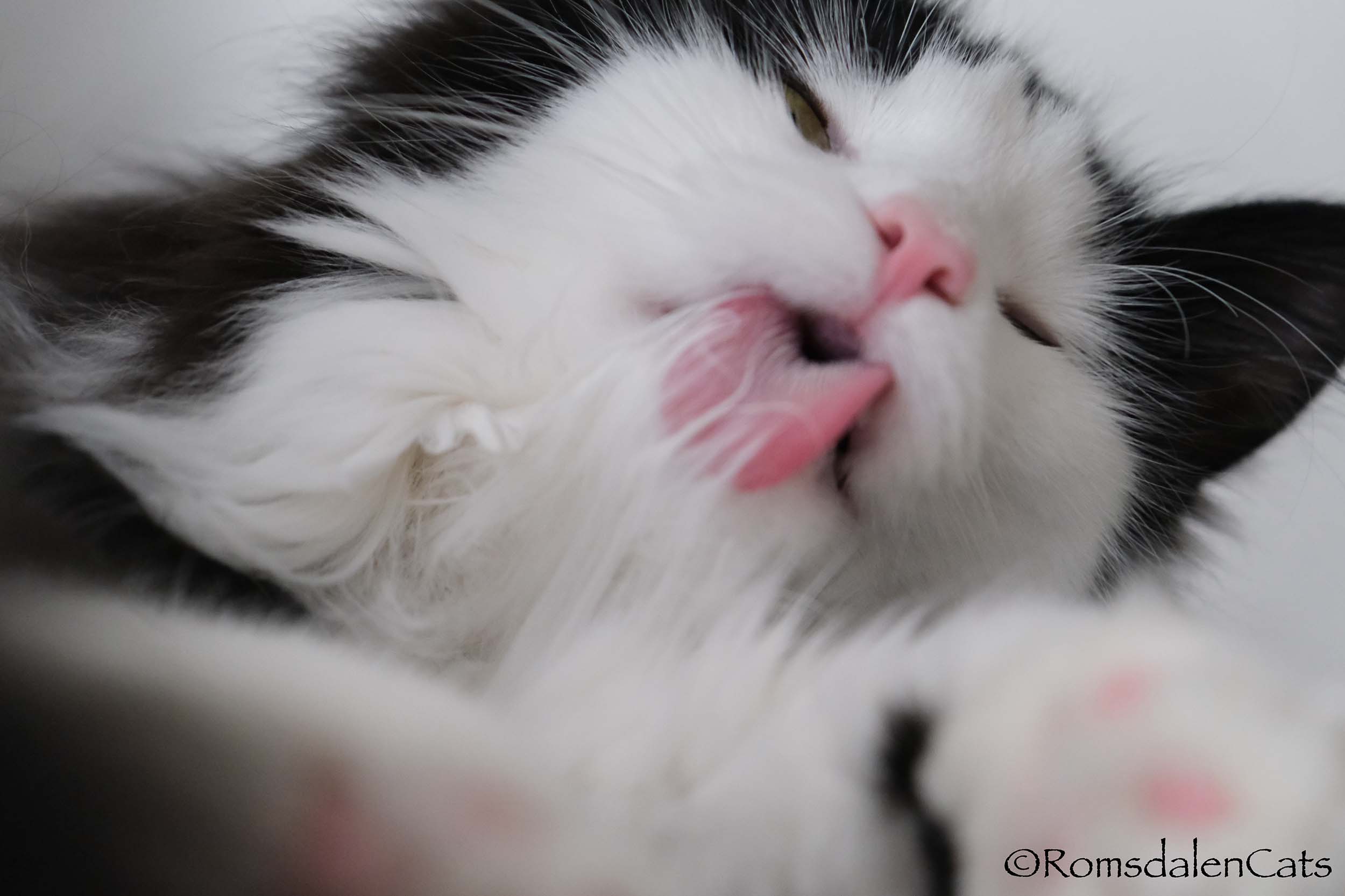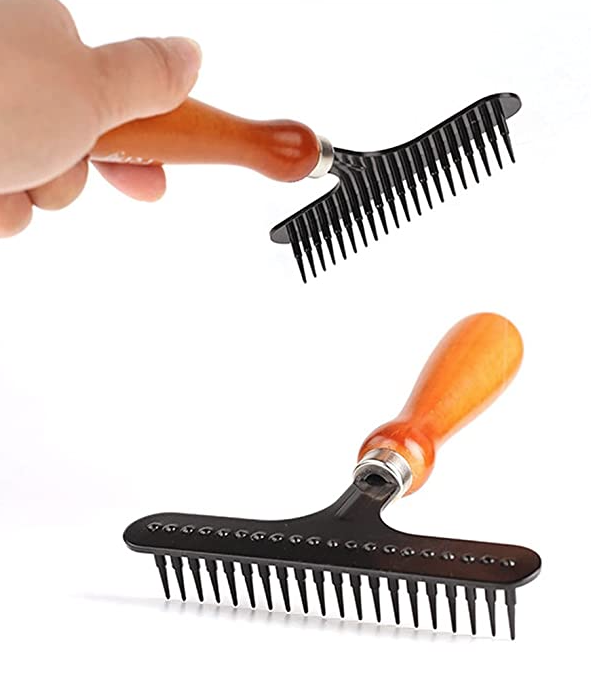
NFC Info

The Norwegian Forest Cat is a breed that captivates not only with its stunning physical attributes but also with its charming personality. Each cat boasts a unique character, brimming with sociability that enriches any home. For those considering a single pet, we advise against it; these felines thrive on companionship and require ample attention and affection to truly flourish.
One of the breed’s most endearing qualities is their ability to form a deep, singular bond with a chosen individual. While they are fond of all, the connection with their special person is unparalleled. Beyond their affectionate nature, Norwegian Forest Cats are known for their distinctive vocalizations. Rather than the typical ‘meow,’ they communicate through a symphony of sounds. Lilly, for instance, engages us in constant conversation, expressing her needs through gentle chirps. The ‘churtling’ sound they make when content or playful is particularly enchanting, resembling a melodic call. This vocal repertoire extends to a ‘mer’ alert from CK, signaling his approach to us or his feline companions. Their language is a joy to witness and a testament to their communicative nature.
Playfulness is another hallmark of this breed. Their youthful spirit persists well into maturity, making every moment of play a delightful spectacle. The Norwegian Forest Cat embodies an ideal balance of playfulness, affection, independence, and attentiveness. It’s often said among enthusiasts that one is never enough; such is the allure of these extraordinary creatures. They are indeed very special little beings, each one a treasure to behold.
They are slow maturing breed. They take between 4 to 5 years to fully mature, although they are mostly done by around 3 years. It is fun to watch their slow transformation over the years into the large, powerful, impressive cat they are destined to be, and whose beginnings you can see from earliest kittenhood.
CoatThe wet and cold conditions that are commonly found in Norway created the dense, semi-longhaired coat. There are two layers to an NFC's coat, the top layer has long, oily guard hairs that keep the rain and snow from penetrating to the skin, the bottom layer has dense, soft, woolly fur that keeps the heat in, and helps to keep the wind from penetrating. They also have ear tufts to keep their ears warm. Their long bushy tails can be used to wrap around themselves and keep their face warm when they sleep. Their paws are often very furry and, this helps to keep their feet warm when walking through the snow and helps to keep the snow from melting under their feet.
Body
They have a very strong, powerful body with a lot of muscle and heavy boning. They are built for hunting and tree climbing. Their back legs are slightly longer than their front, which enables them to climb trees more easily. They are also able to climb down trees head first. They have long tails, which they use as a counter balance when they are running, enabling them to make sharp turns. They have large paws that can be spread out to act like snowshoes to help them walk on top of the snow without falling through. (However, keep in mind that although they are built to survive outside, our modern outdoor environment is very dangerous for them and they should NEVER be outside without supervision and a leash.)
Head
The NFC head is an equilateral triangle with almond shaped eyes that tilt toward the outside base of the ears. The ears are medium sized and follow the triangular lines of the head. They should also have a strong chin with a straight profile. Generally the head is framed by a large ruff of fur. This combination of characteristics produces a sweet, yet intense look. It is an NFC's head more than any other part of the body that really establishes the look of the breed. It is a very unique feature.The best summary that I have heard of the NFC breed as a whole is it is a breed of moderation, meaning nothing about the NFC should be extreme. They should be a moderate body length, moderately sized ears, legs of a moderate length, etc. This means that an overall appearance of balance is extremely important to the breed. They should look proportionate, and no single part should look too big or too small.
The NFC Breed Standard has 50 points out of a possible 100 attributed to the head. This is a disproportionate amount compared to other breeds. The reason there are so many points on the head is because the NFC head is so important to the overall look of the breed. The breed standard is what defines the look of the breed, and it is the standard against which the cats are judged at a show. However, each breeder has their own interpretation of the standard, which creates minor differences between the cats of different catteries. It can take a while before these differences can be seen, but after working with the standard and breed for a while, they become very obvious.
If you are interested in this breed and just starting to learn about it, I recommend that you read the standard while looking at pictures of several different cats to try to see what the standard is saying. This will help develop a better sense of what specific looks you like best within the breed.
For more information about the breed, visit the CFA NFC page. There is a link on the left to the breed standard.
The NFC is generally a healthy breed, however they are living beings, so they are susceptible to diseases and health problems just like any other creature. Feeding a high quality diet (which that definition is always a hot debate topic) and providing a life with love and exercise will help them stay healthy.
In terms of their coat, they are a double coated breed. This means they have a longer, thicker set of hairs that create a waterproof outer layer and a fine, fluffy undercoat that keeps them warm. I have found brushing once a week is usually enough to keep their fur from matting and reduce the amount of fur around the house. They generally shed the most in the spring when they lose their winter coat, but they also do shed their summer coats in the fall as well. For some NFCs this is a very dramatic change, and the cat goes from looking like a longhaired cat to a shorthaired cat.
When it is shedding season, they will require more frequent grooming. Generally a basic “greyhound” or “butter” comb with a fine and medium set of teeth can be used for their maintenance brushing. When they are shedding their undercoat, an undercoat rake is necessary. Most of the grooming tools available are made for dogs and cats have very different fur, so buying the right product is important. Any of the harsh undercoat rakes will break their delicate fur and while it looks like a lot of fur is coming out of the cat, it is actually breaking the fur which will later cause them to mat terribly. I have found the best undercoat rake is one with a single row of teeth with tapered points. Their fur is so dense, some combs and rakes can’t penetrate to the skin, so just the outer layer of fur gets brushed. The following is a picture of what I like to use.
When they do mat (often in places where fur rubs together such as between the back legs and under the arms), it is important to remove the mat as soon as possible, because it will otherwise continue to grow. I find the best took is a large seam ripper use in sewing. It has a fine point that can get inbetween the skin and the mat and then you can pull up and away from the skin to safely cut through the mat. Cat skin is very delicate and mats can be tight against the skin, so removing a mat can be a slow delicate process. Don’t use scissors, because it is too easy to accidentally nick the skin. If the mat isn’t very tight, it is easy to cut through the center a couple of times with the seam ripper, then pull it apart with your fingers and use a comb to separate the fur and remove the mat. The key to mat removal is catch them early! If your cat has a coat that is very prone to matting, shaving the tummy or having a “lion cut” done can sometimes be the best thing for you and your cat.
Sometimes their fur can get a little greasy and either a wet or dry bath will get them back into condition. If they are very greasy, a wet bath with a good degreaser and shampoo with a blow dry is the best. It is very important that if you give a wet bath that you also do a blow dry. The NFC coat is so dense that it does not dry well on its own. If left to air dry, it can take up to three days to dry! This is not healthy for the cat. However, if using a human hair dryer be sure to set it to the lowest temperature and be very careful to not overheat the cat. It is very easy burn the delicate cat skin or make the cat too hot.
If doing a “dry” bath. I have found putting corn starch in a powdered sugar shaker and sprinkling it on the cat works the best and is safe. Put the cat in a shower or bathtub, work the corn starch into all of the greasy areas. Let it sit for at least 5 minutes to absorb the oil. Then fluff the coat with your fingers all over trying to shake out as much of the corn starch as possible. You will see the corn starch turned into tiny balls as it absorbed the oil. You can also use a comb to help get as much out as possible. Then the cat will groom itself to get the rest out over the next day or so.
A little love, attention and care will result in a happy, healthy NFC for years and years.
Coming soon...
